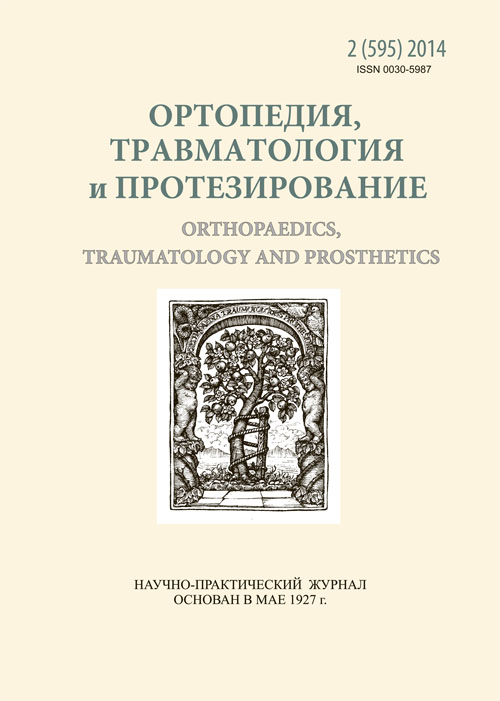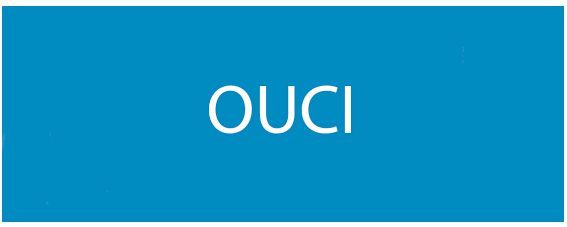Modeling of reconstuction of the coracoclavicular ligament in cases of injuries of the acromioclavicular joint
DOI:
https://doi.org/10.15674/0030-59872014283-87Keywords:
acromioclavicular joint, clavicle, method of fixation, point of fixation, injury and reconstruction of ligamentsAbstract
Objective: to build a model of reconstruction of the coracoclavicular ligament in cases of the acromioclavicular joint injuries and to determine the position of point for the fixateur on the clavicle ensuring minimal forces in the artificial ligament. Model of the acromioclavicular joint represented as a system of interacting rigid rods was taken as a basis. As a result of this study of equilibrium of the system there was obtained a formula allowing to determine the position of point for the fixateur on the clavicle which corresponds to minimal reaction of footing (tensile force) in the fixateur. Channel position in the clavicle for mounting of the fixateur depends on its length. Therefore the most favorable point for the channel in the acromial end of the clavicle has to be located at a distance from 12.9 up to 15.5 % of its total length.References
- Vorontsova E. L. By measuring method bones of the shoulder girdle / E. L. Vorontsova // Bulletin of anthropology. — 2004. — № 10. — Р. 33-40.
- Jigoro S. T. On sexual dimorphism collarbone / S. T. Jigoro // Judicial expertise. — 1962. — T. 5, № 1. — P. 16-19.
- Malakhov S. А. Surgical treatment of injuries of the acromioclavicular joint using lavsanovyh strands: dissertation the candidate medical sciences / S. A. Malakhov. — Stavropol, 2005. — 151 p.
- Method of minimally invasive surgical treatment of dislocations of the acromial end of the clavicle / M. L. Golovakha, I. V. Shishka, J. H. Zabelin [et al.] // Litopys of Traumatology. — 2012. — № 1. — Р. 90-93.
- Patent UA 82256 Ukraine, IPC (2006.01) A61V 17/56. A method of treating fresh dislocations of the acromial end of the clavicle / Golovakha M. L., Banit O. V., Krasnopеrov S. N. [et al.]; applicant and patent Zaporozhzhye State Medical University, Golovakha M. L., Banit O. V., Krasnopyorov S. N. — № u201301908; statement 18.02.2013; published on 25.07.2013, Bulletin № 14.
- Acromioclavicular joint dislocation: a comparative biomechanical study of the palmaris-longus tendon graft reconstruction with other augmentative methods in cadaveric models / Guntur E. Luis, Chee-Khuen Yong, Deepak A. Singh, S. Sengupta David S. K. Choon // J. Orthopaedic Surgery and Research. — 2007. — Vol. 2. — P. 2–22.
- Acromioclavicular joint reconstruction: a comparative biomechanical study of three techniques // A. Lädermann, B. Gueorguiev, B. Stimec [et al.] // J. Shoulder and Elbow Surgery. — 2013. — Vol. 22, Issue 2. — P. 171–178.
- The anatomic reconstruction of acromioclavicular joint dislocations using 2 TightRope devices / L. Walz, G. M. Salzmann, T. Fabbro [et al.] // Am. J. Sports Med. — 2008. — Vol. 36. — Р. 2397–2406.
- Traumatic acromioclavicular joint separation — Current concepts / C. Fialka, P. Stampfl, G. Oberleitner, V. Vecsei // Eur. Surg. — 2004. — № 36/1. — Р. 20–24.
- Vааtainen U. Radiological evaluation of the aсromioсlavсular joint / U. Vааtainen, A. Pirinen, A. Makela // Skeletal Radiol. — 1991. — № 20. — Р. 115–116.
Downloads
How to Cite
Issue
Section
License
Copyright (c) 2014 Ivan Zabelin, Maksim Golovakha, Igor Shishka, Sergey Choporov, Sergey Gomenuk

This work is licensed under a Creative Commons Attribution 4.0 International License.
The authors retain the right of authorship of their manuscript and pass the journal the right of the first publication of this article, which automatically become available from the date of publication under the terms of Creative Commons Attribution License, which allows others to freely distribute the published manuscript with mandatory linking to authors of the original research and the first publication of this one in this journal.
Authors have the right to enter into a separate supplemental agreement on the additional non-exclusive distribution of manuscript in the form in which it was published by the journal (i.e. to put work in electronic storage of an institution or publish as a part of the book) while maintaining the reference to the first publication of the manuscript in this journal.
The editorial policy of the journal allows authors and encourages manuscript accommodation online (i.e. in storage of an institution or on the personal websites) as before submission of the manuscript to the editorial office, and during its editorial processing because it contributes to productive scientific discussion and positively affects the efficiency and dynamics of the published manuscript citation (see The Effect of Open Access).














